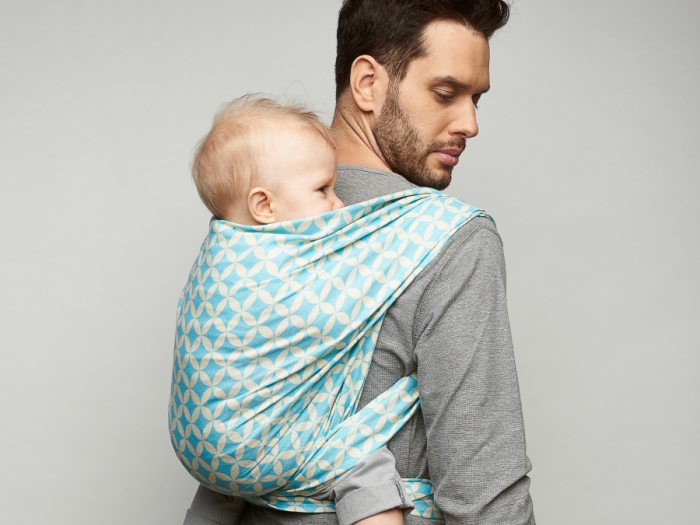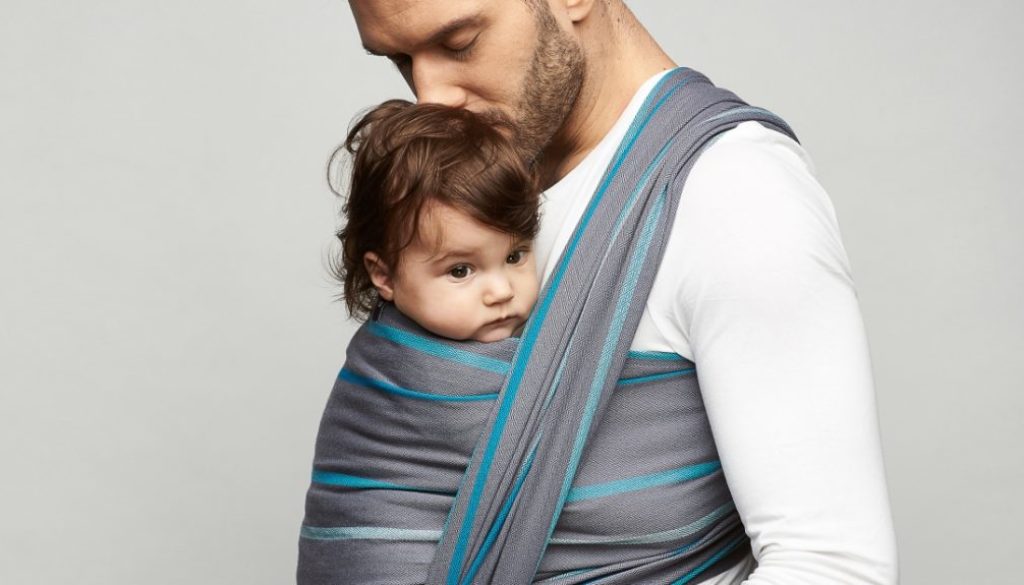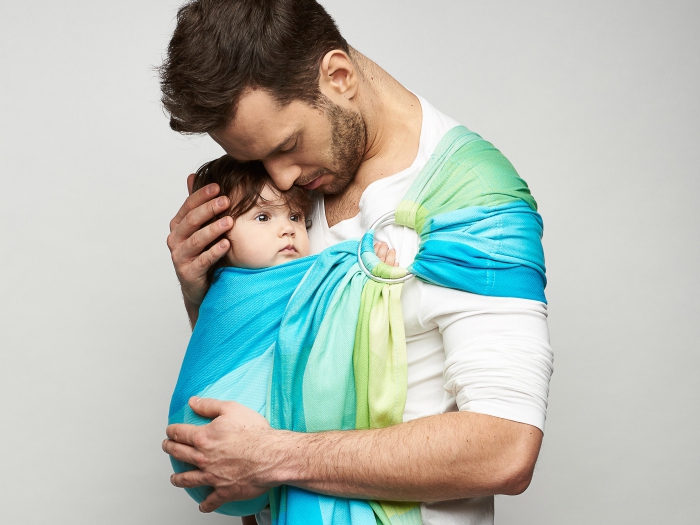Carrying in sling – what is it about?
Parenting is a hard and demanding time. Since the moment of conception a parent had constantly planned, asked questions and searched for answers to various questions, which will enable him to take good care of his/her baby. When mum and dad are going through books and the Internet looking for remedies for the whole ill of the world it turns out that they themselves are the remedy for their baby. It is enough if they pick up and hug their baby. As for carrying in arms and hugging all day long many problems may make it impossible, however, here is a solution, which is a sling.
A long sling
Carrying in slings is becoming more and more popular. Tangled babies in slings on the Polish streets do not make surprise any more. It is, however, worth knowing that not every fabric is suitable for carrying baby in. A sling is a wholly woven, broad and long part of material. It is not sewed together at all. Its edges are cut diagonally and its centre is marked by a producer’s tag. The sizes of a sling chosen for particular parent’s body are very essential. Making a decision on its sort we should take into consideration the size of the clothes we wear as well as our body. The length of the sling may also hinge upon a type of carrier that we choose – e.g. for a kangaroo hold more material is needed than for a pocket one.
Back or front?
The most popular holds among new parents are kangaroo and pocket ones. Baby is then placed on parent’s chest. Braver parents decide to tie a simple backpack carrier. Then bay is placed on back. At the beginning of using slings we can also use a ring sling. Which allows you to carry your baby on your tummy. All the mentioned styles of carriers can be used since birth. If a mum had a natural childbirth, baby is healthy and mum has enough strength then she can start using slings. In case of a birth by caesarean section it is advisable to wait some time before using slings. Some women after caesarean section begin to carry their baby within a month, whereas others have to wait longer – it is an individual matter.
This way of carrying is also permitted in the event of prematurely born babies. If there are no contraindications for carrying in slings then the only condition is baby’s weight which must be 2,5 kg minimum. It is also worth mentioning about carrying babies during pregnancy. A sling properly formed and tightened unburdens your spine especially the lumbosacral section.
Beginners – what’s needed?
Carrying baby in a sling is associated with purchasing it. The most important aspect of a sling is that its weave should work. In the beginning a diagonally- crossed weave is recommended. If a parent is raw he or she is advised to get the first sling stripped with different brinks. A stripped sling will enable you to see how the material works and gets adjusted while you learn to tie it, in other words, you will get the essence of tying. While tightening a parent will see which part of the sling is being tightened. Thanks to this learning a technique will become easier. It should be remembered that a sling is a component of our attire so apart from the aspects regarding the choice of the first sling it should please us as well. We will not wear anything that we dislike.
Sling composition
The sling composition has an impact on its work. if we have a 100% cotton sling then we can expect a soft and co-working fabric. There are, however, some admixtures that make slings harder and strengthen their carrying capacity, for instance: linen or hemp. In such a case a sling may need to be softened by washing it before its use. Another popular admixture is wool most often merino. This admixture may make our sling soft and carrying blanket. on the market there are a good many types of admixtures more or less exotic. Nevertheless, pure cotton is recommended to be chosen in the beginning.
How to master techniques of sling tying?
Tying a sling can be done in various ways. A popular method of getting knowledge on this is taking advantage of instructive video clips. In the Internet there are numerous clips presenting different ways of tying. Before we decide upon any concrete clip it is reasonable to get some information on its author and see his/her references. It will make us sure that the consultant is fully competent to instruct others. It needs to say that such clips may not be able to present all the details sufficiently which may cause a learner to be unable to catch and correct errors.
It is also worth mentioning about instructions which producers often attach to their slings. They may constitute a good source of iteration of acquired skills. However, photos and descriptions of presented movements may sometimes be incomprehensible. The best solution is a meeting with a sling consultant. Consultant will show how to tie a sling and will instruct a parent in the elements of knowledge on carrying in slings. Besides, during consultations he or she takes care of correctness of tying and currently corrects parent’s errors.

Why carrying in slings is worthy of attention?
Carrying in slings is a great adventure, which brings lots of benefits. The first and probably the most significant one is satisfaction of the need of closeness. A short time after a birth baby tries to find himself / herself in the new environment. Hearing his/her mum’s voice and her heart beating as well as smelling her scent is associated by baby like being in her womb. Closeness makes him/her feel safe. Carrying and hugging develop process of creating and establishing bond. Carrying in slings is also very practical and useful during problems with colic and teething. Then babies demand more care and need to be close to their parent.
One of many advantages is having free hands. Free hands enable you to take a sandwich, clean up a kitchen, cook dinner or review a journal. It eliminates the stress bound with neglect of daily duties. Additionally, a properly fixed sling substantially unburdens parent’s spine. However, none of the above mentioned arguments would not be reasonable if it weren’t for the fact that in a sling baby is in a proper position. He/she is not put vertically but safely lies on parent’s chest in accordance with his/her own physiology.


